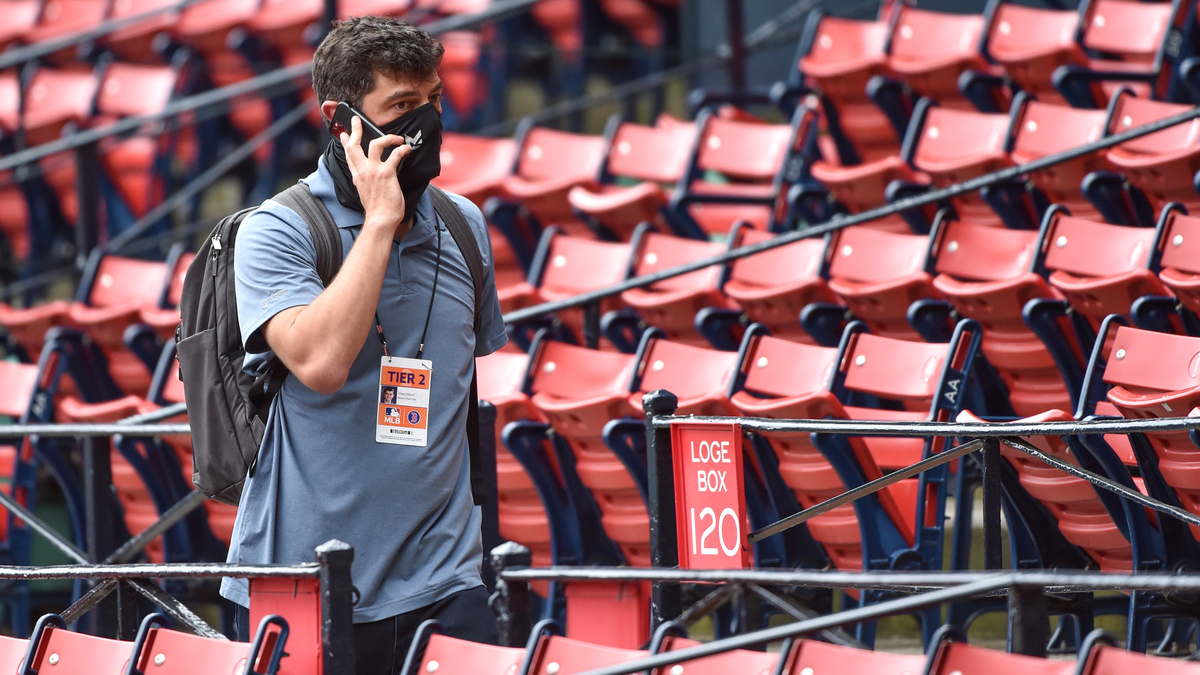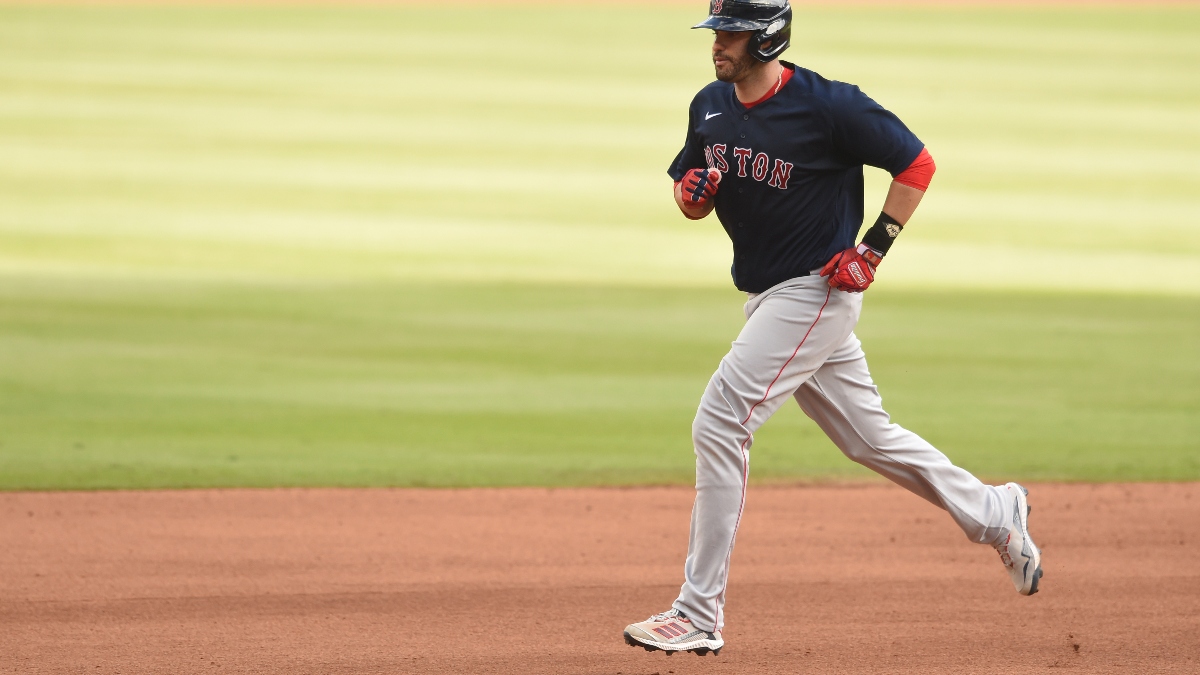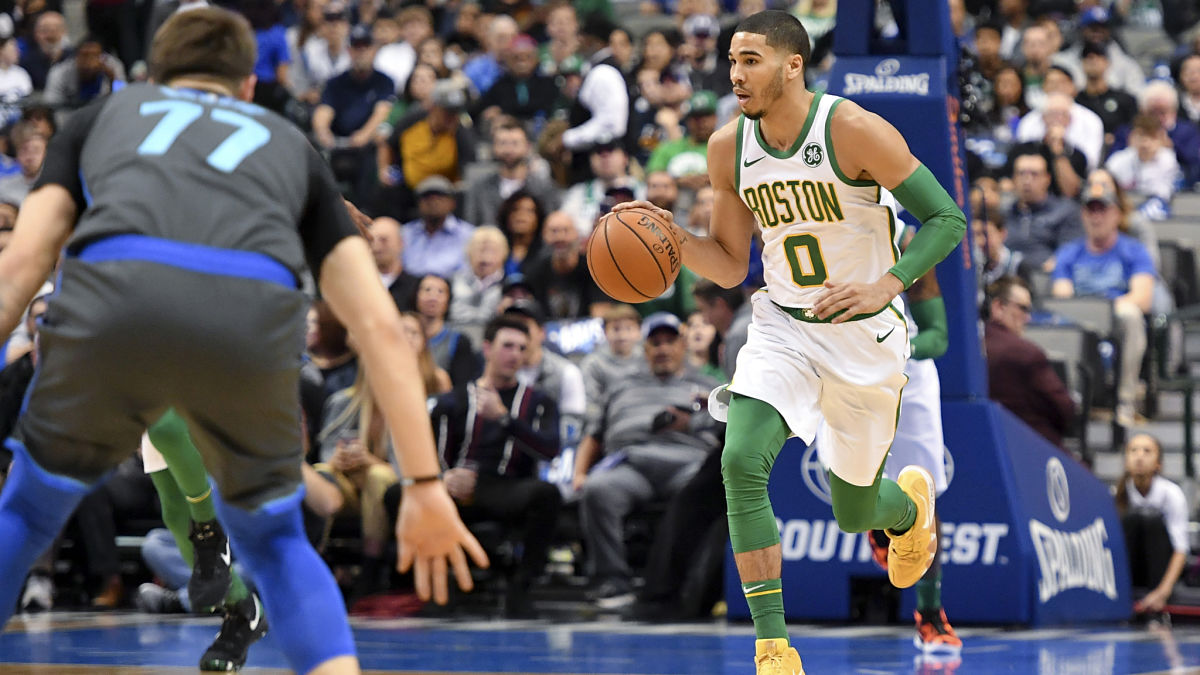Assuming (relatively) good health, we know what we'll get this season from the left side of the Red Sox infield.
The right side? That's where things get really intriguing.
Boston in 2020 got another excellent season from shortstop Xander Bogaerts, who hit .300 with 11 homers and 28 RBIs. The 28-year-old solidified himself as the best all-around player on the team, as well as the leader in the clubhouse. Third baseman Rafael Devers was a slightly different story, as he experienced an all-around regression from his MVP-caliber 2019 campaign. Nevertheless, still oozing talent at 24 years old, there is little reason to worry about Devers, especially with Alex Cora back as manager.
Now, about second and first base.
The following players all saw time at second base last season: Jose Peraza, Michael Chavis, Jonathan Arauz, Tzu-Wei Lin and Christian Arroyo. Depending on how spring training shakes out, it's entirely possible none of those players break camp on the major league roster.
Here's how Red Sox second basemen collectively ranked in various statistical categories, via FanGraphs:
FanGraphs WAR: -0.2 (25th)
FanGraphs offensive rating: -9.0 (22nd)
FanGraphs defensive rating: 0.5 (18th)
Batting average: .236 (16th)
On-base percentage: .295 (20th)
Slugging percentage: .356 (20th)
Yeah, it wasn't good.
The numbers for first basemen were slightly better, largely thanks to Mitch Moreland, who was excellent before a midseason trade to the San Diego Padres. Rookie Bobby Dalbec's late-season power surge also helped.
Here's how Moreland, Dalbec and Chavis (21 stars) collectively fared:
FanGraphs WAR: 1.0 (13th)
FanGraphs offensive rating: 9.7 (6th)
FanGraphs defensive rating: -8.0 (25th)
Batting average: .253 (10th)
On-base percentage: .328 (12th)
Slugging percentage: .522 (5th)
Again, better, but with caveats.
So, what's different this year, and why could things be better?
The signings of Enrique "Kike" Hernandez and Marwin Gonzalez should provide more talent and versatility and, consequently, more stability. Both veterans can be described as "superutility" players, capable of playing most infield and outfield positions. And they should see plenty of time on the right side of the infield.
Hernandez (a .240 career hitter) made 22 starts at second base last season for the Dodgers and twice appeared at first base. He'll play everywhere but, if he plays well, he could be the primary second baseman
Gonzalez last year made 19 starts at second and five at first. A switch-hitter, Gonzalez could platoon at first with Dalbec in addition to playing all over the outfield and infield. The 31-year-old has more offensive upside than Hernandez, with his 2017 campaign (.303 average, 23 homers and 90 RBIs) representing his high-water mark.
Despite the issues of last season, it wasn't all bad. Arroyo impressed down the stretch and could platoon at second. Arauz, who started hot but finished cold, likely will start the season in the minors but offers more value as a superutility depth option. He's young and has upside.
Obviously, Dalbec, for all his strikeouts, gives fans plenty to get excited over. As for Chavis, his future -- be it in the infield or the outfield or, perhaps, even the minors -- likely will be determined by his spring performance.
And then there's the farm system.
Jeter Downs, acquired in the Mookie Betts trade, largely is viewed as the No. 2 prospect in the Red Sox system and the second baseman of the future. He might force his way to the majors as early as mid-season. Further down the pipeline is first baseman Triston Casas, Boston's top overall prospect. He still is a couple years away, but some evaluators see Freddie Freeman written all over him.
So, now matter how you slice it, you should feel better about the 2021 Red Sox infield than you did the 2020 version, and you have reason to believe the future is bright.
For now, let's focus on 2021. Here are our best- and worst-case scenarios, plus an X-factor, for Boston's infield:
BEST-CASE SCENARIO
Let's try to keep this somewhat realistic.
Devers, fueled by Cora's return, reclaims his status as one of the best young offensive players in the game and settles in as an average defender. Bogaerts takes his game to another level, setting career-highs in homers (33 in 2019) and batting average (.320 in 2015).
On the right side, Hernandez does just enough offensively and defensively to earn the majority of the time at second base. Arroyo, a first-round pick in 2013, finds a home in Boston and proves worthy of a spot on the bench. Gonzalez fills in when needed.
At first base, Dalbec hits 30-plus homers while posting a tolerable strikeout rate and playing solid defense. Gonzalez, reunited with Cora, puts his 2020 struggles with the Minnesota Twins behind him and offers above-average offense in a platoon role.
Perhaps Downs pops after a mid-to-late-season call-up.
Oh, and everyone stays relatively healthy.
WORST-CASE SCENARIO
Again, let's keep this realistic. It's not like the sky will fall on the infield.
Let's say Devers does not improve at third base and proves himself to be a defensive liability. The Red Sox, needing to keep his bat in the lineup, are forced to move him from third to first to designated hitter, creating all kinds of potentially problematic instability.
Bogaerts has a down a year when the Red Sox need most of their players to over-perform if they want to make the playoffs.
Boston never quite finds the right mix and matchups for Hernandez and Gonzalez, and neither exceed expectations when they are on the field. Arroyo struggles and loses his spot on the big league roster.
Dalbec, striking out far too much, goes through a sophomore slump and loses playing time. Gonzalez isn't much better.
Downs scuffles in Double-A, prolonging his promotion to the big leagues.
X-FACTOR
Dalbec.
He has a lot of work to do. However, the 2016 fourth-round pick possesses middle-of-the-order offensive potential. Should Dalbec get off to a good start and, say, hit .250 with 30-ish homers, everything changes for this offense.
Should things go sideways for Dalbec, Gonzalez might have to play more than anticipated at first base, thus limiting Cora's ability to utilize his versatility.






